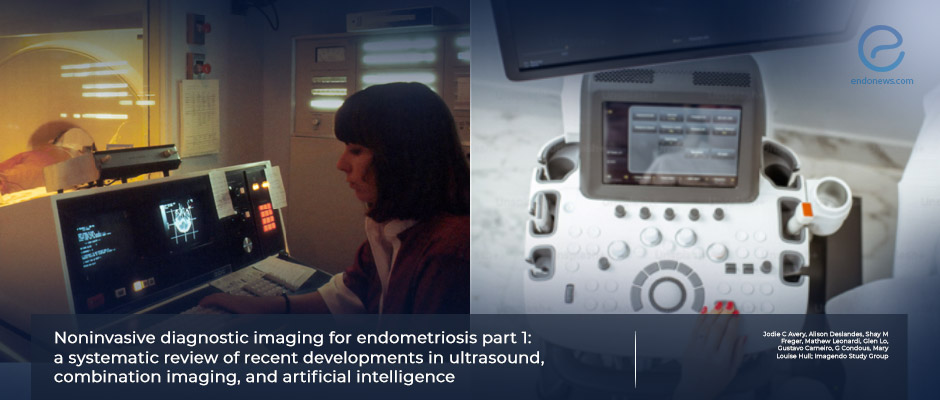Revolutionizing endometriosis diagnosis: Advances in radiological imaging
Apr 15, 2024
Radiological innovations offer hope for improved endometriosis diagnosis, review study shows
Key Points
Highlight
- Recent advancements in diagnostic radiological imaging, especially in endometriosis transvaginal ultrasound (eTVUS) and magnetic resonance imaging (eMRI), have transformed the diagnosis of deep and ovarian endometriosis.
Importance
- Accurate diagnosis of endometriosis is crucial for the appropriate management and improved patient outcomes.
- eTVUS and eMRI offer non-invasive options for diagnosis, potentially reducing reliance on surgery and histology.
- Artificial intelligence (AI) tools show promise in aiding diagnosis and decision-making.
What's done here
- A review by Avery et al. and the Imagendo Study Group summarized recent literature on the diagnostic value of eTVUS, its combinations with eMRI, and the role of AI in endometriosis detection.
- Studies between January 2016 and September 2023 were analyzed, focusing on various imaging techniques and their accuracy.
Key results
- Preoperative imaging facilitates precise mapping of endometriotic lesions, aiding in surgical planning and multidisciplinary consultation.
- Laparoscopy and histopathological evaluation of the biopsies remain valuable for confirming diagnosis, especially when imaging is inconclusive.
- eTVUS demonstrated high sensitivity and specificity for deep and ovarian endometriosis, with the potential for improved diagnosis of peritoneal endometriosis.
- Combining eTVUS and eMRI data enhanced diagnostic efficiency.
- AI models showed promise in classifying endometriosis from imaging, potentially aiding clinical decision-making.
- eTVUS and eMRI promise to revolutionize endometriosis diagnosis and care, even though challenges like personnel training and reliance on laparoscopy remain.
Lay Summary
With recent advances in diagnostic radiological imaging, the diagnosis of endometriosis, particularly for deep and ovarian endometriosis, has been revolutionized. Updated guidelines now recommend the initial use of endometriosis transvaginal ultrasound (eTVUS) and magnetic resonance imaging (eMRI) for diagnosis, although surgery and histology are still necessary for confirmation and treatment.
Avery et al., together with the Imagendo Study Group from Australia, Canada, and the UK conducted a review of recent literature focusing on the diagnostic value of eTVUS, its combinations with eMRI, and the role of artificial intelligence (AI) in endometriosis detection. The article was published in the February 2024 issue of the journal Fertility and Sterility.
Studies performed between January 2016 and September 2023 were included. A total of 40 studies about ultrasound examination particularly regarding deep endometriosis and ovarian endometrioma were detected. In these studies, it was seen that various techniques, including TVUS with rectal water contrast and elastosonography, have been explored, aiming to adhere to the IDEA group's consensus. eTVUS shows high sensitivity for deep endometriosis involving the rectum but lower rates for other sites. Ovarian endometrioma detection via eTVUS remains reliable, with ongoing exploration of sonographer versus sonologist roles. The authors discuss that eTVUS is an effective tool for diagnosing endometriosis, yet its adoption in community gynecological practice is slow. Professional guidelines lack strong support, citing barriers such as sonographers' limited experience and insufficient scanning time. However, they also state that momentum in the literature suggests eTVUS may become standard practice for gynecological sonographers.
Additionally, several studies compared the diagnostic accuracy of eTVUS and MRI for deep endometriosis, reporting high sensitivity and specificity. It was seen that study protocols, patient populations, and operator experience varied. Combining imaging modalities posed challenges due to patient heterogeneity and differences in interpretation. Five published papers investigated AI diagnostic tools for endometriosis using eTVUS and MRI. Studies demonstrated varying accuracies, with some AI models achieving results comparable to expert sonologists. It is stated that deep learning models show promise in classifying endometriosis from ultrasound images, potentially aiding clinical decision-making. Combining eTVUS and eMRI data improves diagnostic efficiency, suggesting AI's potential in enhancing endometriosis diagnosis.
The authors conclude by saying that eTVUS demonstrates high sensitivity and specificity for ovarian endometrioma and deep endometriosis, with the potential for improved diagnosis of peritoneal endometriosis. Its benefits in surgical planning are recognized by gynecological societies, enhancing fertility outcomes. However, challenges include personnel training and reliance on laparoscopy as a reference standard. Overall, eTVUS and eMRI promise to revolutionize endometriosis diagnosis and care.
Research Source: https://pubmed.ncbi.nlm.nih.gov/38101562/
endometriosis transvaginal ultrasound MRI TVUS

